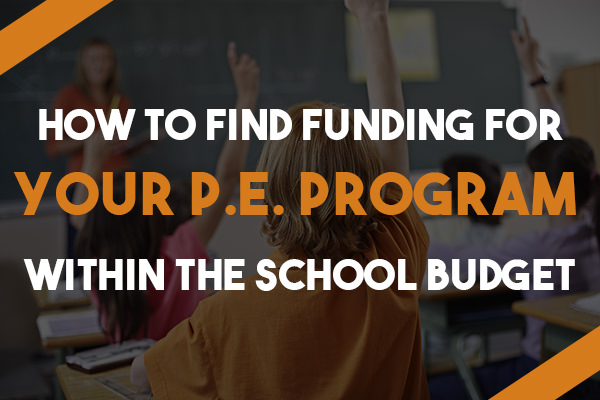Funding to finance comprehensive programs for PE program is not easy. Traditional campus funding that is allocated to PE programs is usually limited. But does it have to be? When administrators develop their budgets each spring for the next school year they have a hard task of deciding what percentage of their budget they will use in each different program area. Continuous pressure on administrators to increase student academic scores on standardized assessments often dictates budget expenditures.
Does that mean that PE budgets are hopelessly left with little or no funding at the end of the process? No! It means that as PE teachers it is our responsibility to demonstrate with data and scientific evidence how the level of fitness and wellness of students correlates to academic achievement. Communication is the key.
It is important that PE educators make it a priority to demonstrate how their program has the potential to have a positive impact on student academic performance. And, just as importantly it is necessary to make sure that these conversations with peers and administrators happen on a continual basis and not just at budget time.
There are additional streams of funding that are available within each school district as well. Funding for evidenced based programs within physical education may also be funded through Title I and Title VI funding. Professional development and training for teachers can be funded Title I funding. Physical Education equipment that is technology based can be supported with technology funds. If your PE program has a parent component, or if, like the IHT Spirit System, it has a parent engagement element, your program might also be eligible for funds set aside by the district specifically for parental involvement.
Funding that is overlooked by PE teachers often stems from the Special Education Department. Monies that facilitate students with special needs meaningfully participating with their non-disabled peers in physical activities are available. In addition, making a case for how a specific program or equipment can actually enhance the physical and/or educational experience of students with special needs can be productive.
There are multiple funding sources within school districts that are too often overlooked by physical education teachers. The first step in accessing these funds is to believe in your value that you bring to the whole school. The second step is to communicate that value to peers and decision makers whenever possible. The third step is to become informed about sources of funding are available and then ASK to be included in the planning discussions. The future of physical education funding for our students is ultimately our responsibility.
Written by IHT’s Director of Grant Services, Dawn Marie Baletka.



